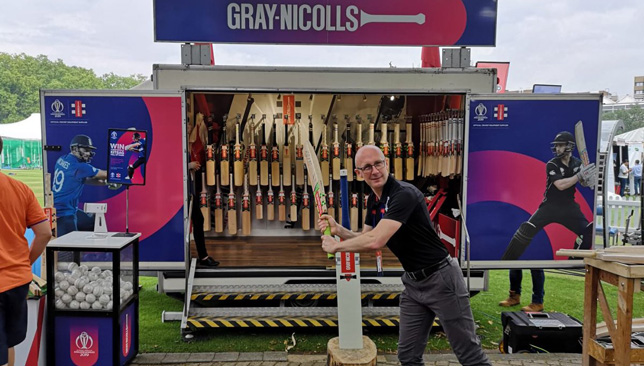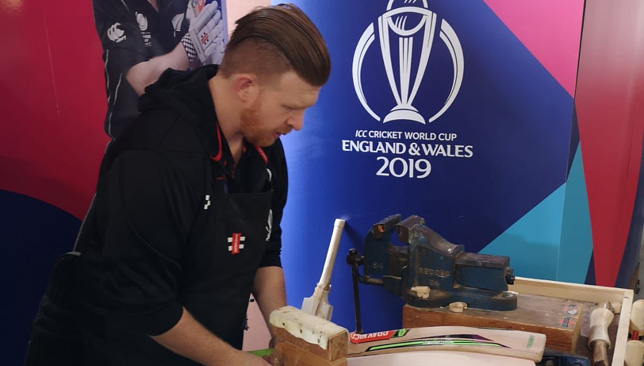
Cricket in sunny St John’s Wood is always an amazing affair – the razzmatazz, the buzz of the crowd, waving of flags… and a World Cup clash.
There was a sea of green inside and outside the Lord’s ground as Pakistan and South Africa faced off last Sunday. The ‘home of cricket’ was buzzing and will continue to do so when it hosts the final in a few weeks from now.
On my way inside Lord’s on Sunday, I passed what is now a regular fixture at ICC tournaments and the English home season – the Gray-Nicolls stand, the official equipment supplier for the tournament. Anyone who is anyone in cricket has used their equipment at one time or another. They have had legends such as Brian Lara, Matthew Hayden, Alistair Cook and David Warner, not to mention England’s Jonny Bairstow and Shadab Khan of Pakistan among others.
The staff at Gray-Nicolls have one of the hardest jobs in this tournament, having to travel up and down the country for matches. Alex Hohenkerk, who is the one of the master batmakers in the company, has the unenviable task of setting up the stand at various venues during the course of the tournament. In the short time Alex could spare, I tried to understand what happens during a World Cup day at a Gray-Nicolls stand.
“I finished at Old Trafford last evening after the West Indies game, packed up, jumped on the motorway and headed south towards London, reached London at 2 am and was at Lord’s at 7:30 this morning,” Alex told Sport360.

Alex Hohenkerk of Gray-Nicolls.
“I need at least five cups of coffee to keep me going during the course of the day. Trust me, I need them all.”
What makes their job tougher is the fact that the stand has to be up and running at the six main venues at the World Cup during match days.
“It’s a tough thing to do, especially when you have to get representatives out to showcase the brand, talk about it. And to do so we have to cover the ‘platinum’ grounds, which are Lord’s, The Oval, Edgbaston, Old Trafford, the Rose Bowl, and Trent Bridge. You have to get a full team on board… we’ve five here today at Lord’s,” Alex explained.
“Logistically it sounds like a nightmare, but we have a great team here and it’s not as bad as it may sound. It gives us a chance to discuss our brand all over the country, which we all love doing. I mean anyone who loves cricket, can talk cricket all day long. Our products are always evolving, albeit with a traditional touch, which is something that attracts many players to Gray-Nicolls.”
It’s not all networking and corporate engagements though. There is the odd occasion when a contracted player needs a bat. At such times, that work takes precedence. “We get the odd non-contracted player also asking us to repair a bat,” says Alex.
“We set up stall each morning. Then during the course of the day we get all sorts of questions, anything from are we using English willow, what’s the cellular infrastructure of a bat… and so on. Not to forget the demand for kits, even from players, while I’m trying to make five to six bats.”
The sound off #KaneWilliamson's bat is music to the ears, but he took it to another level when he joined #CWC19 Cricketarist Mike Wilton with a @graynics 'bat'!pic.twitter.com/4qV0WyHwUk
— Cricket World Cup (@cricketworldcup) June 25, 2019
During the course of this interview, Alex was asked to make another bat. It is a long process and I’m surprised he does it with the limited amount of tools at hand. Not wanting to take up any more of his time, I asked him the most important question – who made the Gray-Nicolls guitar? It’s a special guitar made in the shape of a bat by the manufacturers and a regular feature at stands at the World Cup.
“I did, though it was strung at a guitar specialist in Taunton, a real work of art if I do say so myself,” Alex said with pride.
I left Alex to carry on with his bat making, returning to the confines of the media centre, happy in my new-found knowledge of cellular infrastructure of a bat.